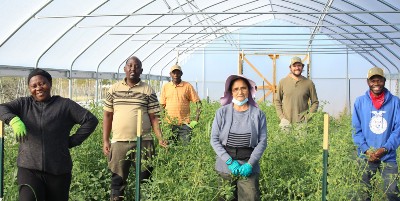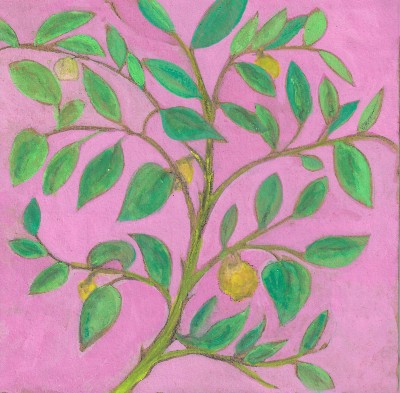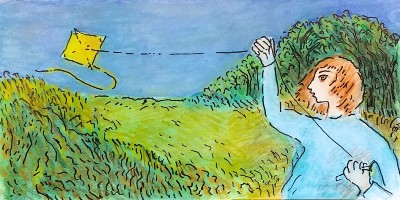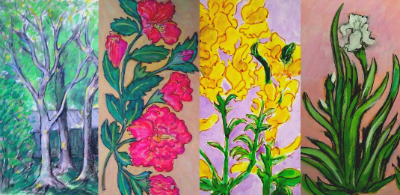 bringing nature, nurseries and gardeners together Nov. 5 2021
|
|
Notes: the Natural Gardener is welcoming the fall with a 25% discount on annuals, and a 20% discount on trees; this weekend only. / Food Forest Fair: with its seed ball making, nature-theme arts and crafts and free 5 gallon native trees, this event at the N. Lamar International District Food Forest on Saturday (Nov 6) from 11 - 1 pm. sounds like the place to be. Roots & Wings Festival / If you have a carved pumpkin and don't know what to do with it, consider donating it to Central Texas Pig Rescue. Central Texas Pig Rescue. / Sheena's Pickles: on Monday eve, Austin Organic Gardeners welcome Sheena Moore to their on-line meeting. Learn how to pickle vegetables and fruits so that they last all year long. A.O.G. ❦
_________________________________________________

CSA New Leaf Agriculture: with a workforce from Burma, Afghanistan, Bhutan, Eritrea, Mexico and Congo, the Multicultural Refugee Coalition is running a very successful textile studio and organic farm here in central Texas. You can now order boxes of organic vegetables from their CSA at reasonable prices. New Leaf ❦
_________________________________________________
Matt Welch, Barton Springs Nursery: at 7 p.m. on Thursday (Nov 11) Matt will give a talk on soil development and restoration. Matt is described as "one of those encyclopedic plantsmen that is impossible to stump." $10 - tickets available at the nursery. Lecture Hall ❦

Gift economy: for years reader Grania Patterson has been enjoying the fruits of her Meyer Lemon tree (Citrus x meyeri). But then along came Snowpocalypse, the poor tree fell on hard times, and eventually passed. But then. . . "in an act of extraordinary kindness," writes Grania, "about a month ago I opened the front door to get my paper, and discovered someone had placed a new Meyer lemon tree on my porch. No note, just an anonymous gift. I was so touched." ❦
_________________________________________________
Ask Chris: "I have heard this is a good time for 'dividing perennials.' Can you explain what that means, and how to put this into practice? Thanks! - D. G.
Perennials get larger and better every year. By dividing them now you get the benefit of the summer warmth in the ground to stimulate growth and to cooler fall air to lessen stress. October - and into the early part of November - is a great (best) time to plant most every winter hardy plants. Trees, perennials, shrubs, and vines. Hope this helps. I’m in Portland Oregon salivating over the Pacific Northwest fall color. - Chris Winslow

Hancock golf course-to-park: there's no kite-flying or picnicking upon the great lawns of this central golf course right now. . . but there could be Please join us to help heal the land and open up what will someday be a crown jewel in Austin's park system. (painting: Linda Anderson) Hancock Conservancy ❦

Central Texas Gardener: the grounds of the old Eastside Cafe (on Manor) have been turned into Este Garden, a bountiful enterprise which provides the restaurant Suerte with all of its vegetable needs. Pro tips from Anamarie Gutierrez and Lea Scott on fall and winter veggies. YouTube ❦
_________________________________________________
Support the Austin Garden. This newsletter relies on donations from readers. Please consider making a donation today. Many thanks ; - ) PayPal ❦
 Linda Anderson
November in the Garden
by Chris Winslow
1. Plant a tree: now is still a perfect time to get that shade or ornamental tree in the ground.
2. Plant flowering perennials: it’s never too late. Even though their tops will be burned back with the first hard freeze, their roots will be hardy. During the cool days of winter, they will establish a healthy root system for a show in the spring. 3. Plant some winter blooming annuals: in central Texas, we can grow pansies, snapdragons, violas, stock, cyclamen, flowering cabbage and kale. Remember to work in some organic plant food such as blood and bone meal. These slow release plant foods will feed your plants throughout the winter and into the spring. Pansies love blood meal. 4. Plant fall bulbs: there is still plenty of time. There is a great selection of late winter to early spring flowering bulbs to choose from. Look for tulips, narcissus, jonquils, muscari, daffodils, ranunculus, and anemones. Bulbs benefit from the slow release phosphorus found in bone meal. Mix a tablespoon in the root zone when planting. For 'a drift' of any of these flowers, you'll need 30 or more. 5. Force some bulbs indoors: this is a fun activity for Thanksgiving and Christmas time. The easiest are paperwhite narcissus. Add some potting mix to a clay or plastic 6” bulb pan (fill about ½ way). Place 3 to 5 bulbs on top of the soil and add some decorative gravel to keep them upright and firm. All you need to do now is water the bulbs in and place the pot in a sunny location. It takes around 3 weeks for the bulbs to force out their foliage and open their flowers. Easy and decorative. 6. Winterize your lawn: use a slow release organic lawn food. This will give nutrition and strength to your lawn for the coming cold months. 7. Cut back your perennials: do this after the first frost, and mulch your beds with compost and mulch mixed together. This combination will feed the roots while conserving water and warming the bed. (Average day for first fall frost is November 28.) 8. Onions, scallions, garlic: November is onion, scallion, and garlic month. To be successful with these vegetable gems, don’t wait until the days get long again. Success requires growing in the short days of winter. You can grow an onion 6” across! Timing is most important. 9. Keep on the lookout for a world of fall bedding (annual) plants. As temperatures cool, we can begin to plant dianthus, snapdragons, and petunias. 10. Watch for black spot and mildew on roses. With cooler weather, these pesky rose diseases will begin to show up. An organic spray of Neem oil or wettable sulfur should help in keeping it at bay. Happy Gardening everyone! ❦ |
 It's About Thyme Legacy Publications.
Contact newsletter editor Darrel Mayers with any ideas for articles or interesting links at internationalrain@yahoo.com (hitting 'reply' to this email won't work) |
|
|